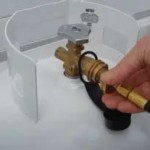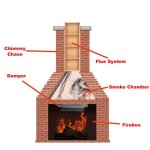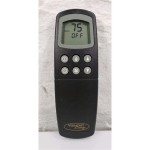Cement Mix for Fireplace Repair and Construction
Fireplaces, whether wood-burning or gas, are subject to extreme temperatures and prolonged exposure to heat. Over time, this can degrade the mortar and brickwork, leading to cracks, crumbling, and, in severe cases, structural instability. Using the correct cement mix is crucial for both the longevity and safety of a fireplace. Ordinary cement mixes are not designed to withstand the thermal stress involved in fireplace applications. This article will discuss the appropriate cement mixes for fireplace repair and construction, the properties that make them suitable, and best practices for their application.
Understanding the Need for Specialized Cement Mixes
The reason standard Portland cement mixtures fail in fireplace applications stems from their inherent properties. Portland cement, while strong in compression, lacks the flexibility to accommodate the expansion and contraction caused by fluctuating temperatures. Fireplaces undergo rapid heating and cooling cycles, and the materials used in their construction expand when heated and contract when cooled. This thermal cycling creates stress within the mortar joints and brickwork. Ordinary cement, being relatively rigid, cannot effectively absorb this stress, leading to cracking and eventual failure. These cracks can then allow heat and potentially sparks to escape, creating a fire hazard. Furthermore, these cracks allow moisture to penetrate the structure, which can freeze and thaw, exacerbating the damage and accelerating the degradation of the materials.
Specialized cement mixes formulated for fireplace applications contain additives and are designed with specific aggregate ratios that enhance their heat resistance, flexibility, and bonding properties. These mixes are often referred to as refractory cement, fireplace mortar, or fireclay mortar. Each type has distinct properties and applications, requiring careful selection based on the specific needs of the project.
Types of Cement Mixes for Fireplaces
Selecting the right type of cement mix is paramount to ensuring a durable and safe fireplace. Several options are available, each with different characteristics and suitable for specific applications:
Fireclay Mortar
Fireclay mortar is one of the most common choices for laying firebricks in the firebox of a fireplace. It's made from a mixture of finely ground fireclay, which is a type of heat-resistant clay, and a binder, typically Portland cement or a similar material. Fireclay mortar exhibits excellent heat resistance and can withstand temperatures exceeding 2000°F (1093°C). It forms a strong bond with firebricks, creating a tight seal that prevents the escape of heat and gases. However, fireclay mortar is typically air-setting, meaning it hardens over time as it dries, rather than through a chemical reaction like Portland cement. This makes it essential to cure the mortar properly, often by gradually exposing it to heat to prevent cracking. Fireclay mortar is often used for constructing the firebox, where direct contact with the flames occurs.
Refractory Cement
Refractory cement, also known as high-temperature cement, is designed to withstand even more extreme temperatures than fireclay mortar. It is a hydraulic cement, meaning it sets and hardens through a chemical reaction with water, similar to Portland cement. However, it uses specialized clinkers and additives to achieve superior heat resistance and strength at high temperatures. Refractory cement is commonly used in industrial applications, such as lining furnaces and kilns, but it is also suitable for high-heat areas of fireplaces, particularly in installations where the fireplace is frequently used or subjected to intense heat. It is generally more expensive than fireclay mortar but offers superior performance in demanding applications.
Type S Mortar
While not specifically a refractory cement, Type S mortar can be used in certain areas of fireplace construction that are not directly exposed to the flames, such as the chimney and the outer layers of the firebox. Type S mortar is a high-strength mortar blend that provides excellent bonding and compressive strength. Type S mortar is a mixture of Portland cement, hydrated lime, and sand with superior bonding capability. Type S has sufficient flexibility to accommodate some thermal expansion and contraction, reducing the risk of cracking. It's also highly resistant to water penetration, making it ideal for external applications such as chimneys. However, it should never be used in direct contact with the fire, as it is not designed to withstand the extreme temperatures of the firebox.
Proper Application Techniques
Even the best cement mix will fail if not applied correctly. The following are some critical considerations for successful fireplace construction and repair:
Surface Preparation: Before applying any cement mix, the surfaces to be bonded must be thoroughly cleaned and prepared. Remove any loose or crumbling mortar, dirt, soot, or other contaminants. A wire brush or chisel can be used to remove loose debris, followed by a thorough washing with water. The surface should be slightly damp but not saturated before applying the mortar.
Mixing the Mortar: Follow the manufacturer's instructions carefully when mixing the mortar. Use the correct ratio of water to dry mix, and mix thoroughly until a smooth, workable consistency is achieved. Avoid adding too much water, as this can weaken the mortar. It's generally better to mix smaller batches of mortar, as it can dry out quickly.
Mortar Joint Thickness: Maintain consistent mortar joint thickness throughout the construction or repair. Generally, a 1/4-inch to 3/8-inch joint is recommended. Too thin of a joint may not provide adequate bonding strength, while too thick of a joint can be prone to cracking. Use a pointing trowel to create smooth, uniform joints.
Curing the Mortar: Proper curing is essential for the long-term durability of the mortar. Protect the mortar from direct sunlight, wind, and rain during the curing process. Keep the mortar damp by misting it with water periodically. The curing time will vary depending on the type of mortar and the environmental conditions, but generally, a minimum of 24 to 72 hours is recommended.
Firebrick Installation: When installing firebricks, ensure that they are properly spaced and aligned. Use a rubber mallet to gently tap the bricks into place, ensuring a tight bond with the mortar. Stagger the joints between courses of bricks to increase the strength and stability of the firebox.
Selecting the correct cement mix and adhering to proper application techniques are paramount to ensuring the longevity, safety, and performance of a fireplace. Proper maintenance and periodic inspection will help to identify and address any problems early on, preventing costly repairs and ensuring the continued enjoyment of a functional and safe fireplace.

Diy Concrete Cement Fireplace Sarah Sherman Samuel

How To Build A Concrete Fireplace Hearth

Brick Fireplace Update Using Cement And Aged Wood Mantel

Diy Concrete Fireplace Makeover Before After Cherished Bliss

Fireplaces Tips Tricks When Using Cemcrete S

Diy Concrete Fireplace Makeover Before After Cherished Bliss

Diy Concrete Cement Fireplace Sarah Sherman Samuel

37 Stylish And Catchy Concrete Fireplaces Digsdigs

Sakrete 50 Lb Mortar Mix In The Concrete Cement Stucco Mixes Department At Com

Fireplaces Tips Tricks When Using Cemcrete S
Related Posts








